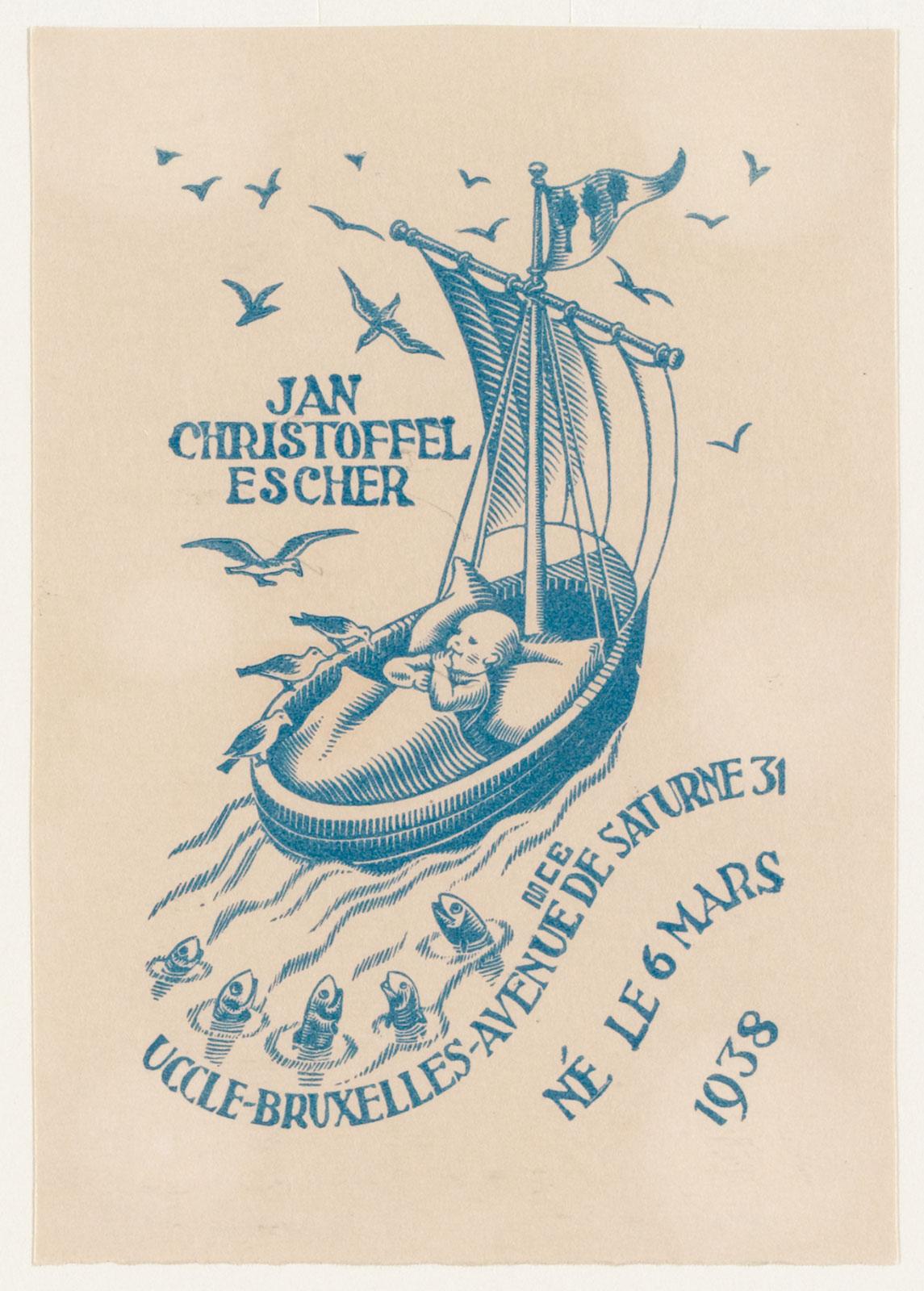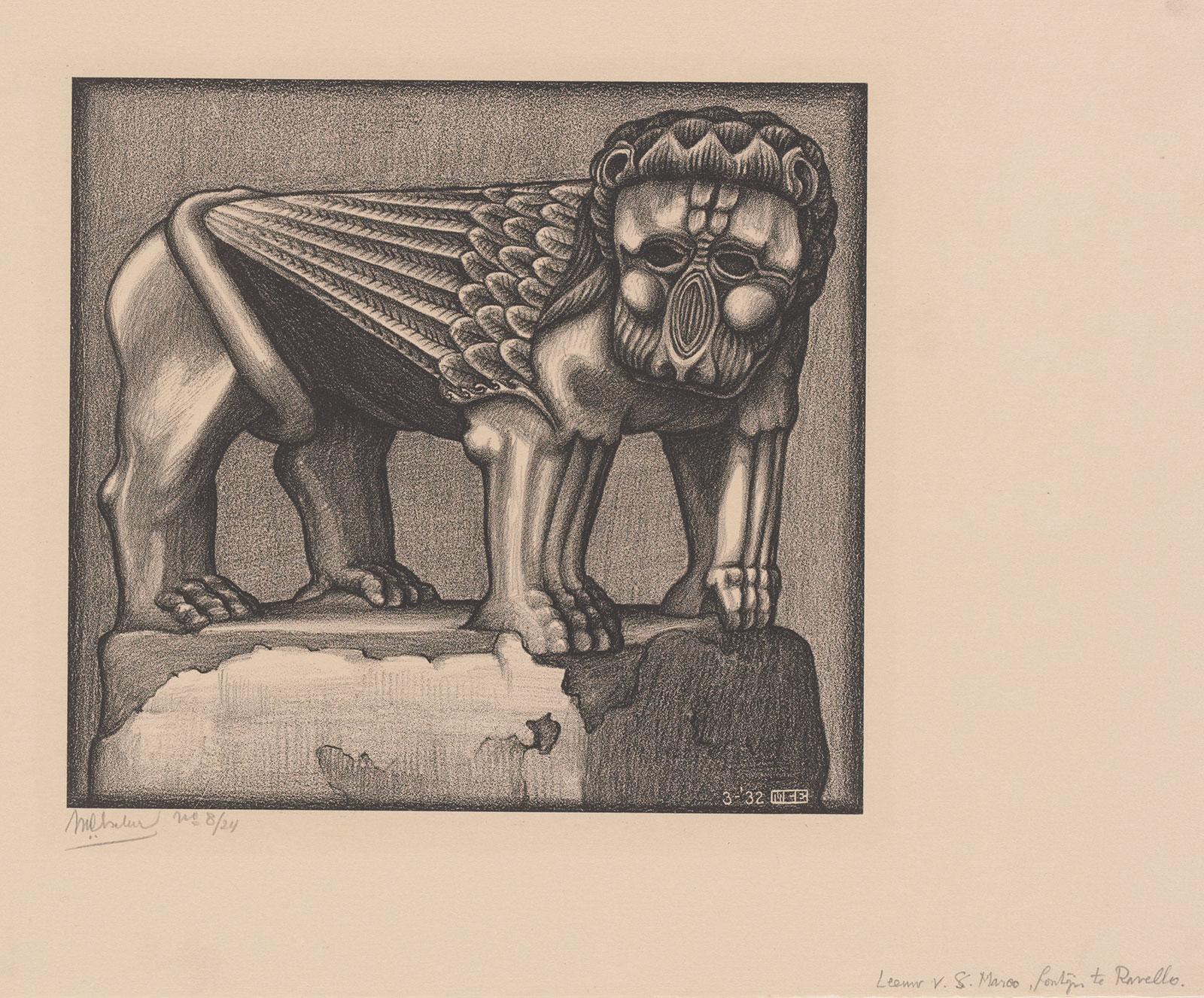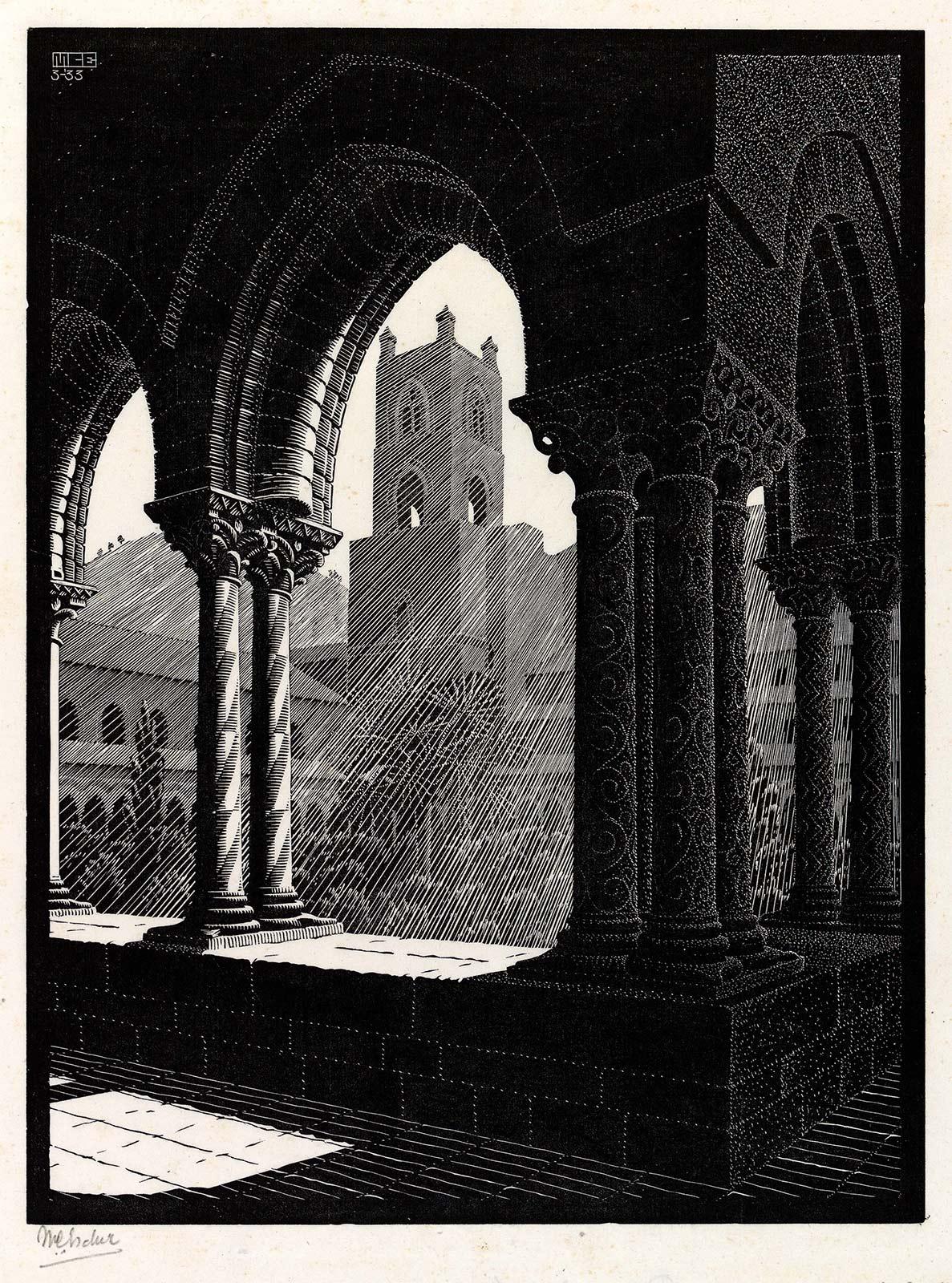
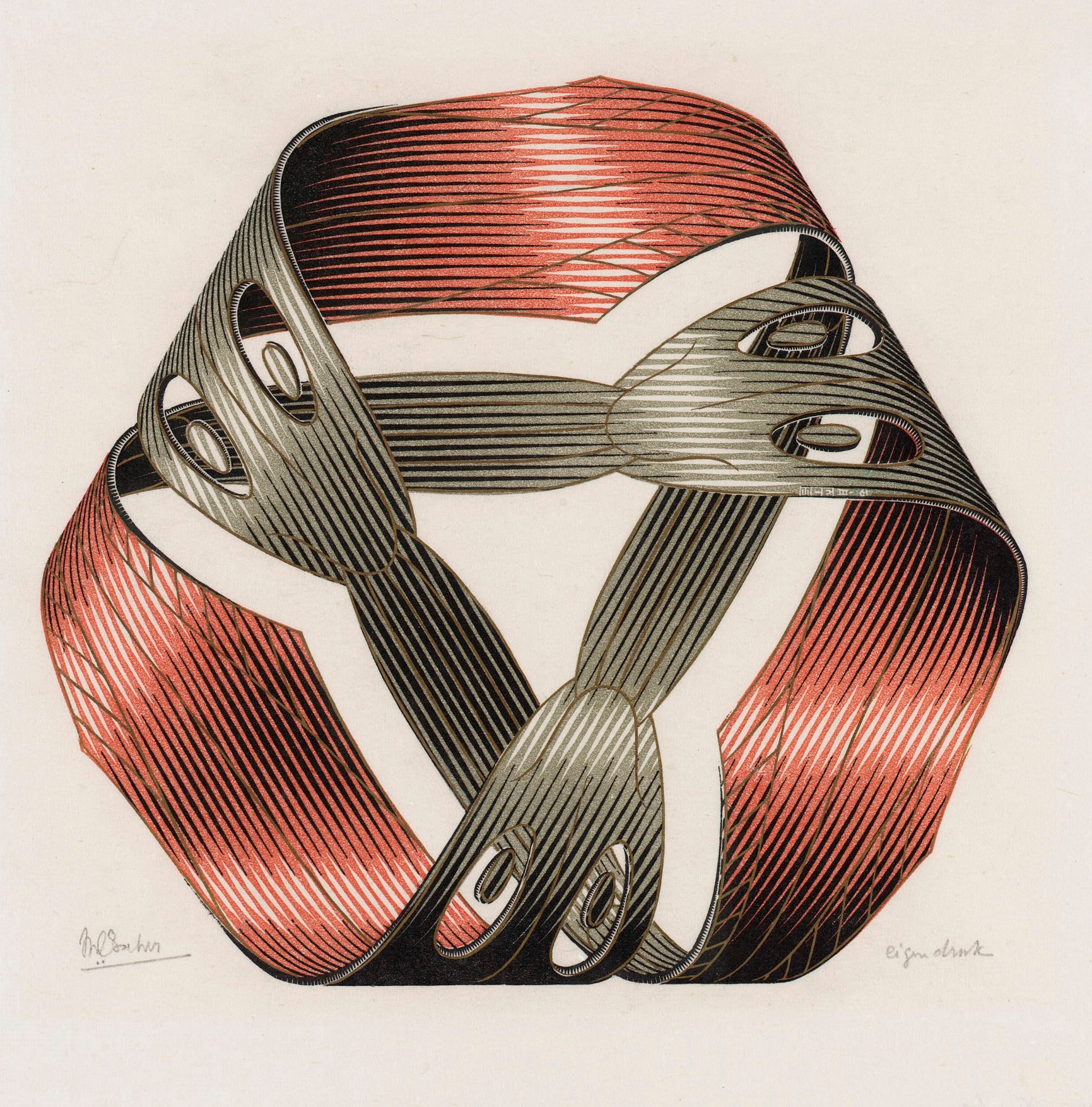
Escher produced a number of prints based on the concept of the Möbius strip, discovered by the German mathematician and astronomer Ferdinand Möbius (1790-1868).
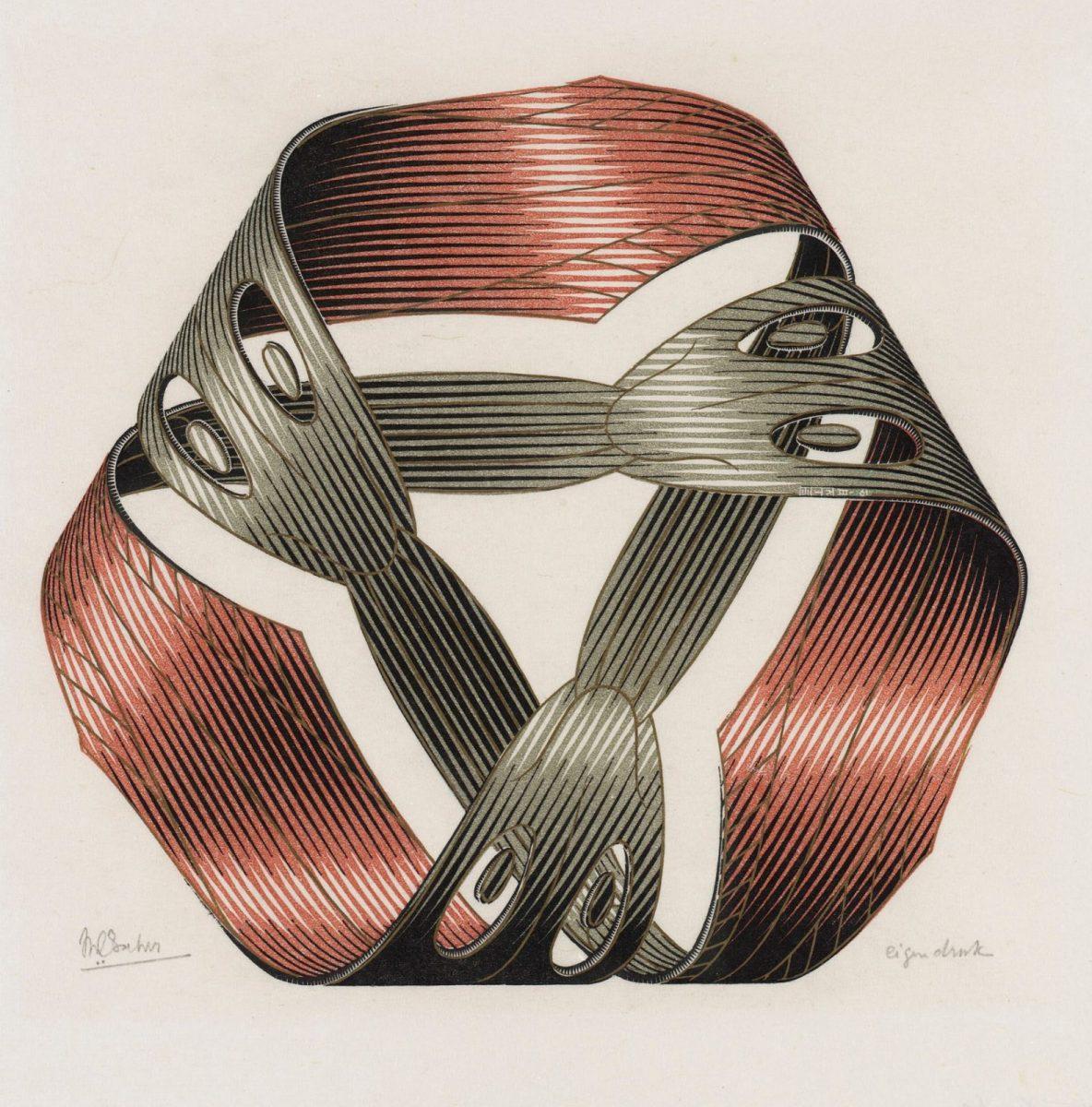
A Möbius strip is a spatial form which appears impossible but can exist in reality. Escher already explored the figure in his woodcut Horseman in 1946 and in his wood engraving Swans in 1956. Möbius Strip I (March 1961) is his first fully developed one and features three snake-like figures biting each other’s tails. In his book The Graphic Work of M.C. Escher he states that they are, in fact, fish:
‘An endless band has been cut through, down its whole length. The two sections have been drawn apart from each other a little, so that a clear space divides them all the way round. Thus the band ought to fall apart into two unattached rings. And yet apparently it consists of one single strip, made up of three fish, each biting the tail of the one in front. They go round twice before reaching their point of departure’.
Even if the animal forms have a rather ambiguous appearance, Escher seems to refer with this print to the Ouroboros. The ouroboros is a snake or dragon that bites its own tail and thus forms an eternal circle. This name comes from the ancient Greek οὐροβόρος and means tail-eater. This symbol from alchemy is one of the oldest mythical symbols in the world. It is a symbol for eternal cyclic renewal, the cycle of life, death and rebirth. By putting three ouroboroi biting each other’s tails in a Möbius band, Escher is reinforcing this sense of eternity.
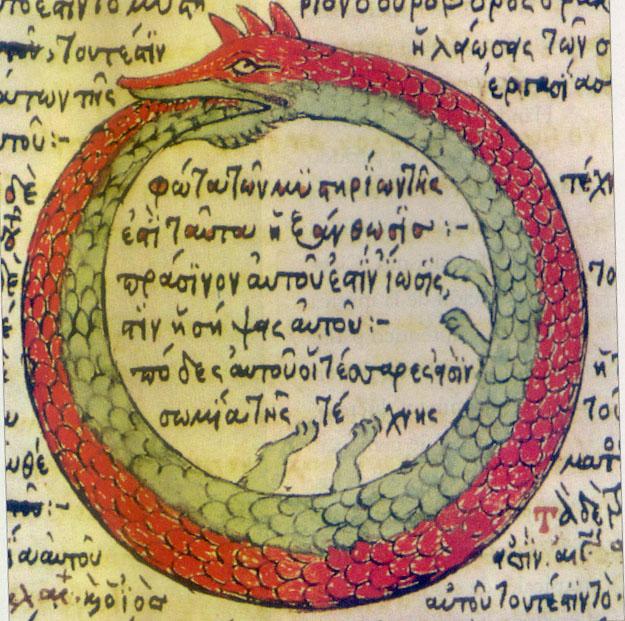
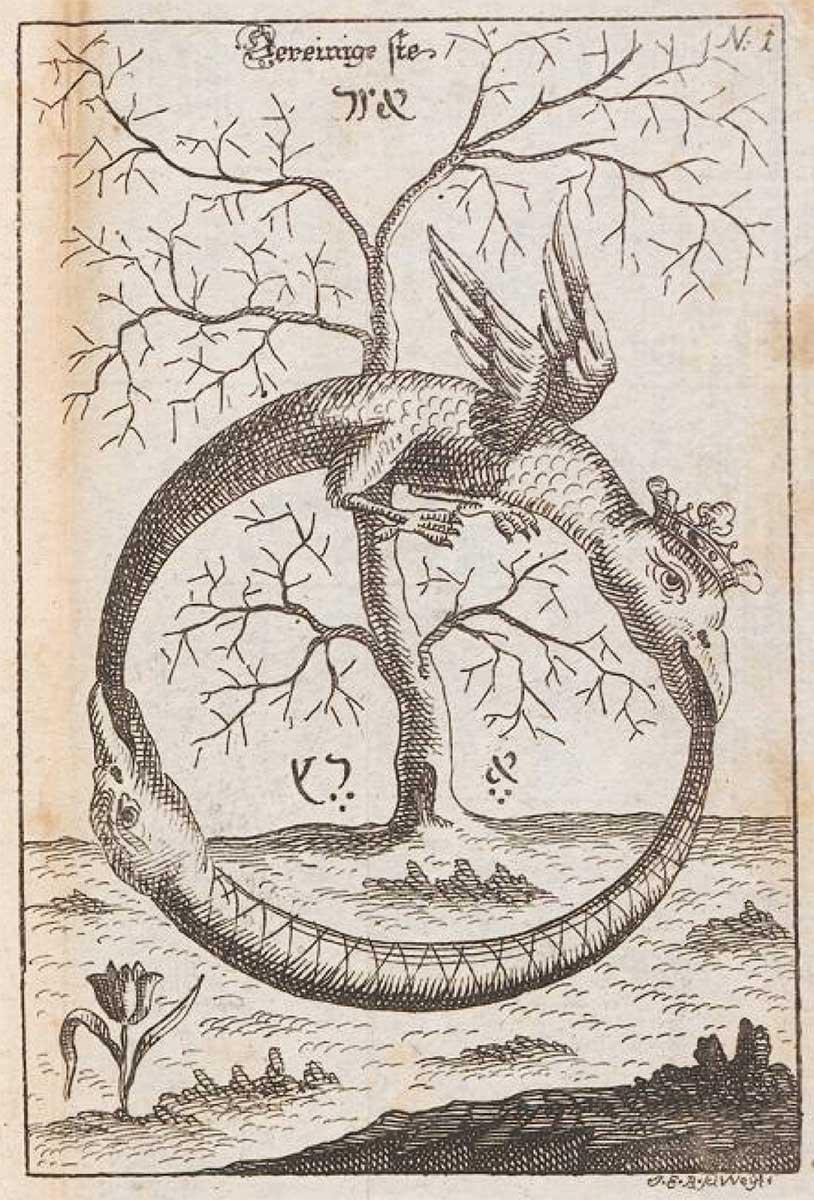
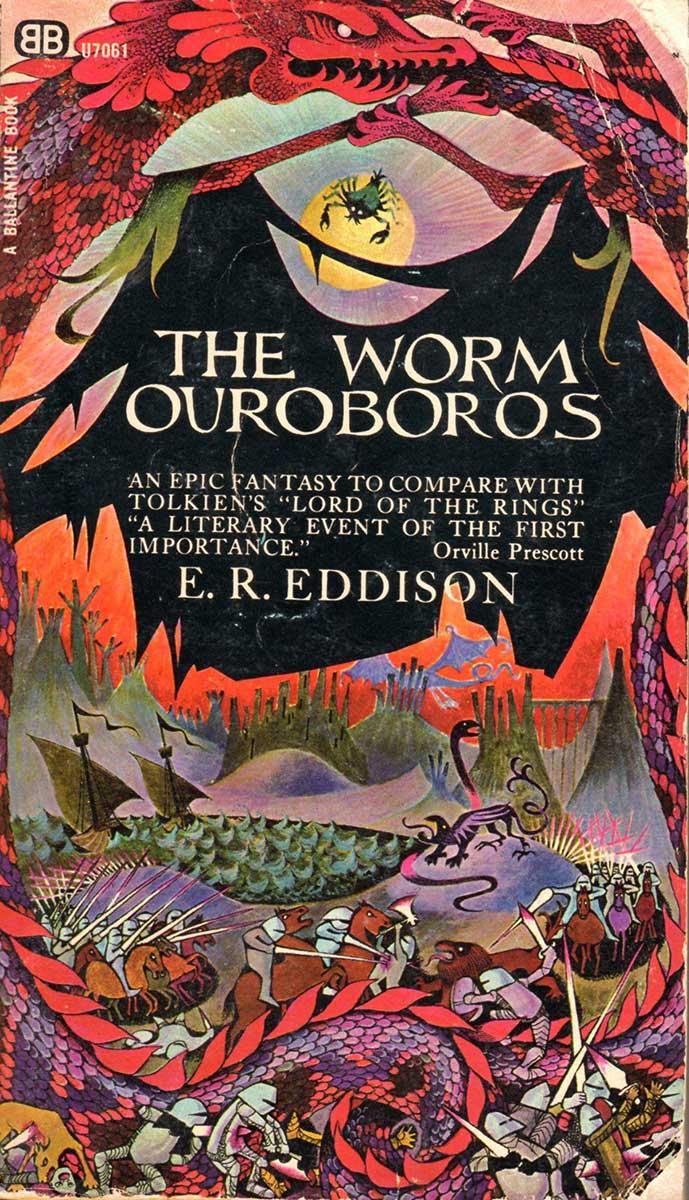
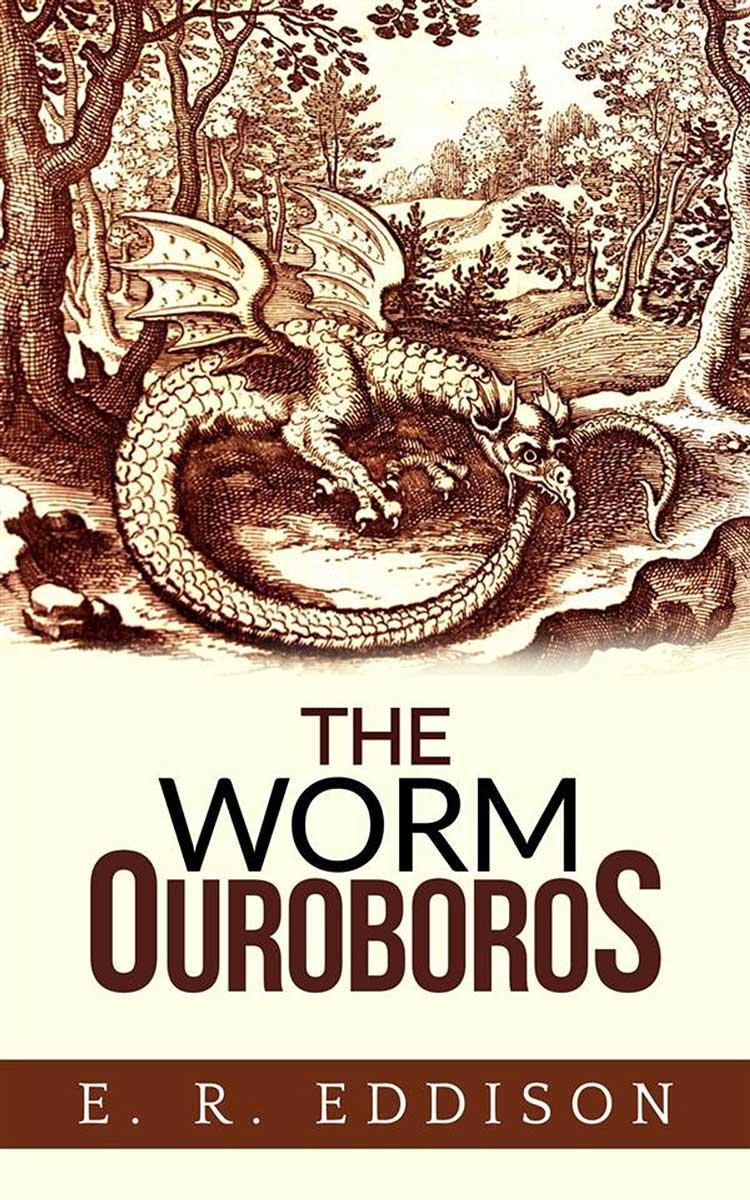
More Escher today


